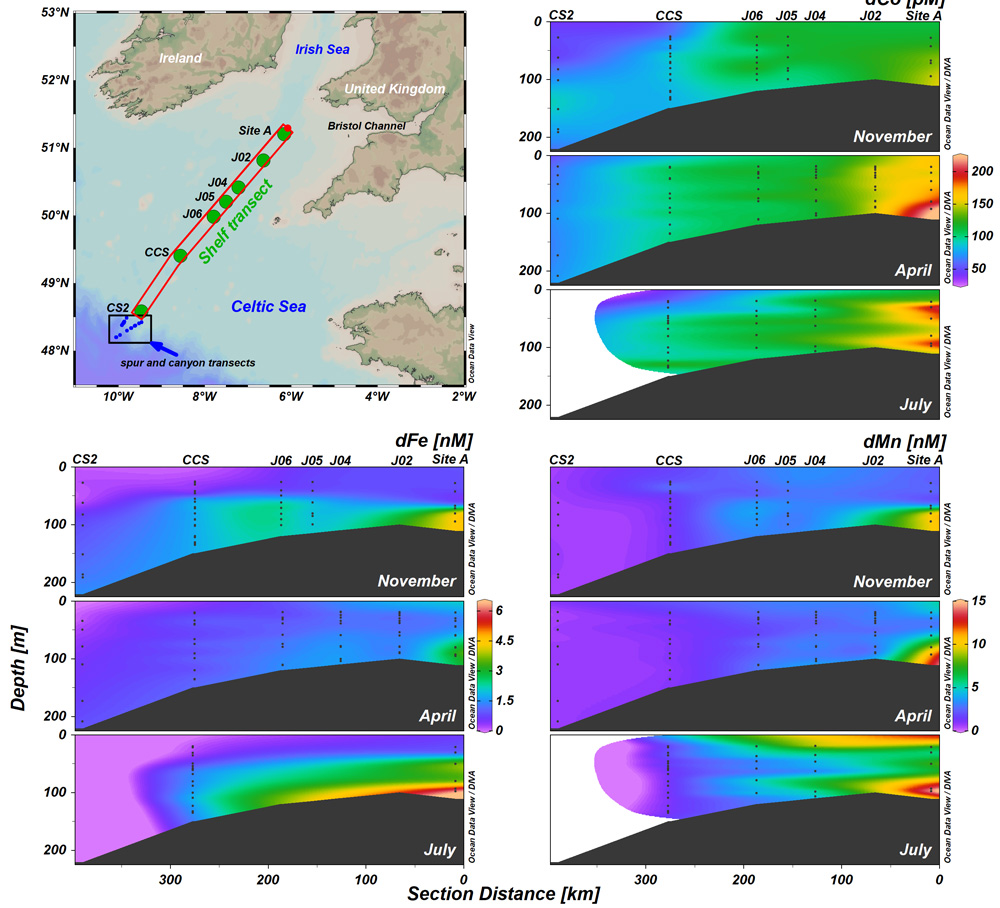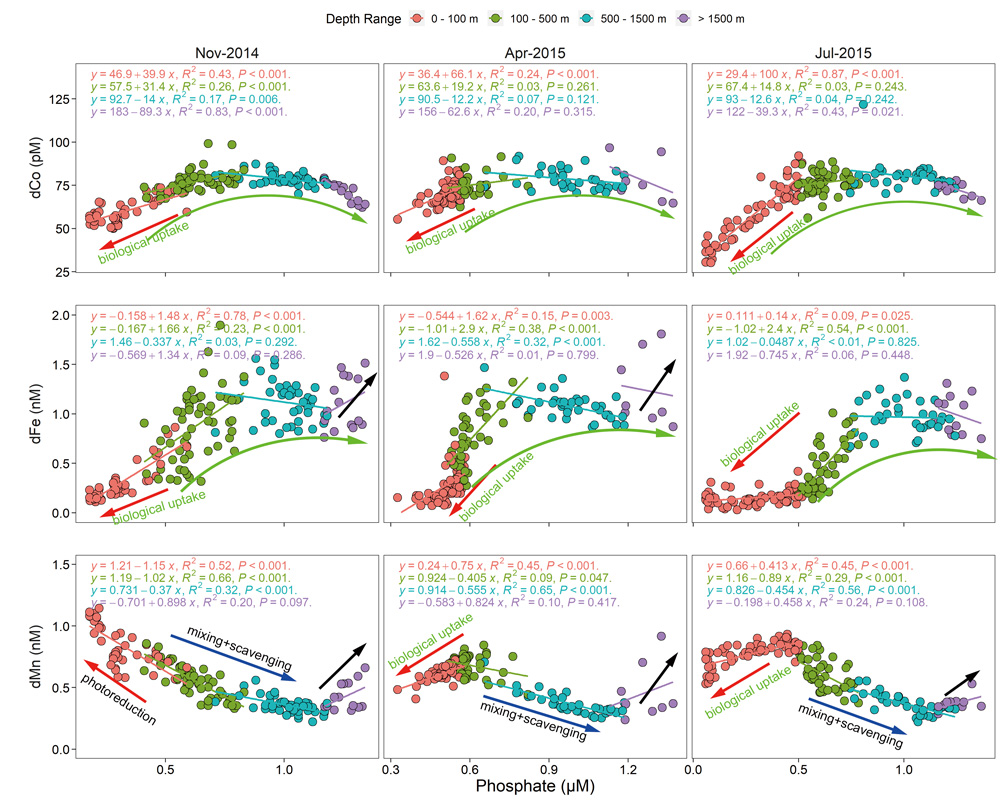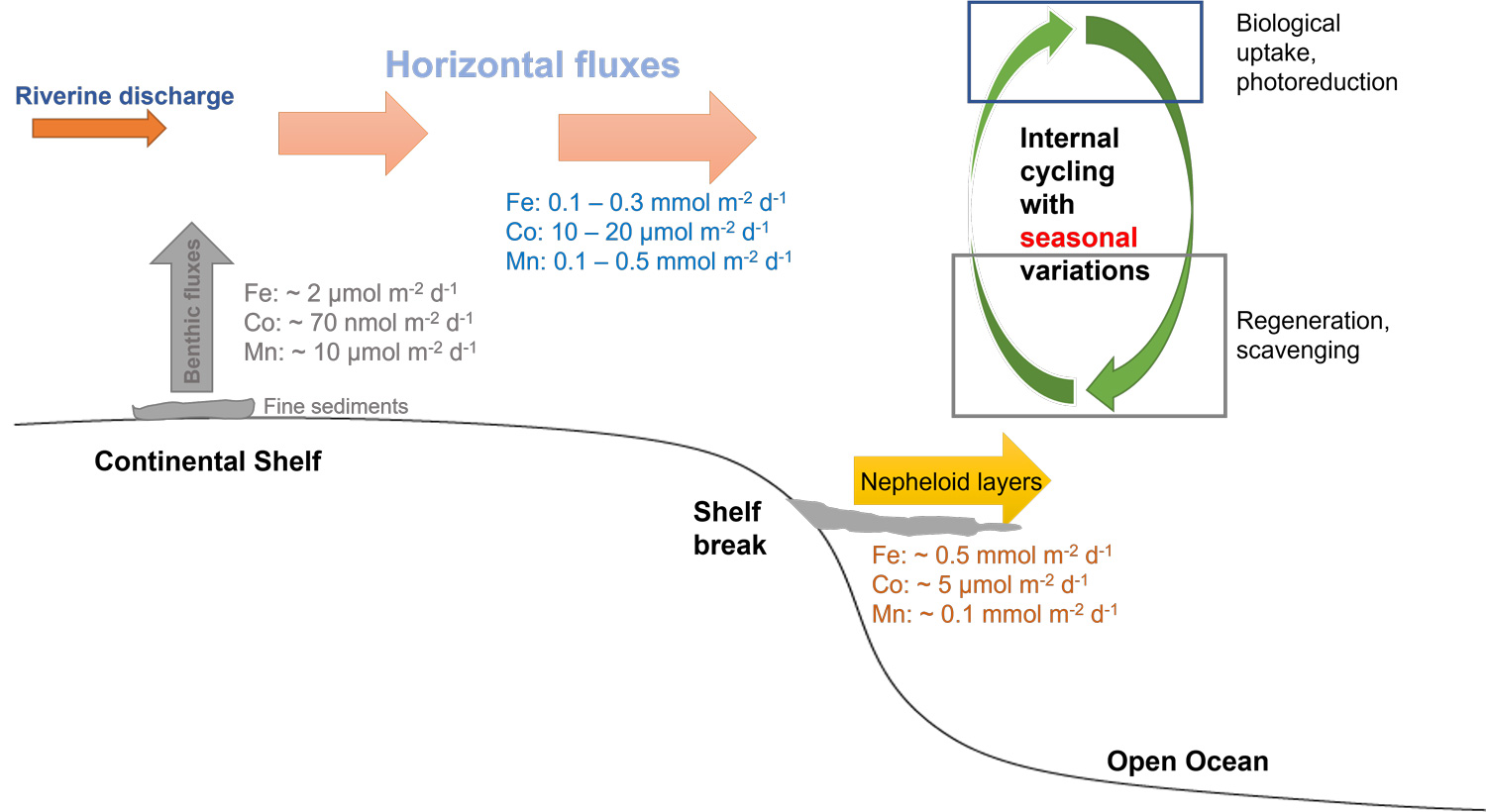A detailed study of the land-ocean input of dissolved iron, manganese and cobalt in the Northeast Atlantic Ocean
Chen and co-authors (2023, see reference below) propose a detailed study of the spatial and seasonal distributions of dissolved iron (dFe), manganese (dMn) and cobalt (dCo) in the Northeast Atlantic continental margin. Samples have been taken along the shelf-to-open sea transect in November, April and July, in other words in fall, spring and summer characterising very contrasted environmental triggers at this latitude. A specific attention was brought to document the trace metal sources (rivers, shelf, margin sediments via nepheloids) and the processes leading to their transformation in the water column (biological uptake/remineralisation, but also water dynamic and mixing)
It is beyond the scope of this highlight to report here the number of data provided in this work. They are summarised in the figures proposed below. However, the authors demonstrate that:
– on the shelf, there is a strong dissolved trace metal contributions from a low-salinity endmember, i.e., riverine discharge while the benthic sedimentary input via reductive dissolution remains low.
– along the slope of the margin, bottom and intermediate nepheloid layers along the slope illustrated both elevated dissolved trace metal concentrations and radium isotopic activities, ending to a significant input of these trace metal to the ocean. The occurrence of nepheloids is strongly linked to the topography of the slope and their persistence are likely vectors for off-shelf transport of dissolved trace metal to the Northeast Atlantic Ocean, with potential consequences for the trace metal-nutrient stoichiometry in open ocean waters.
– Spatial distributions of dFe, dCo, and dMn showed strong seasonal variations on the seasonally stratified NE Atlantic continental margin.Their surface and deep water fates is conditioned by the light (ex photoreduction of Mn), mixing of water masses (e.g. Mediterranean sea influence) and of course surface biological assimilation and bacterial remineralisation at depth.



Reference:
Chen, X.-G., Rusiecka, D., Gledhill, M., Milne, A., Annett, A. L., Beck, A. J., Birchill, A. J., Lohan, M. C., Ussher, S., & Achterberg, E. P. (2023). Physical and biogeochemical controls on seasonal iron, manganese, and cobalt distributions in Northeast Atlantic shelf seas. Geochimica et Cosmochimica Acta, 348, 278–295. doi:10.1016/j.gca.2023.03.023
